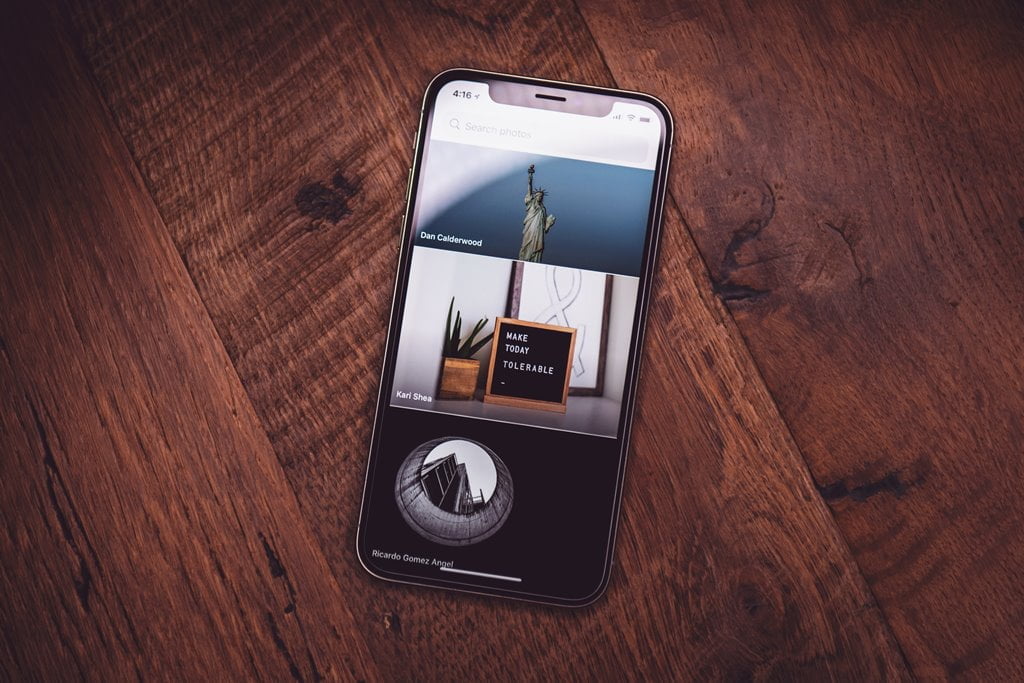Mobile applications run on mobile devices like smartphones and tablets. Apps are not just lighter than similar applications for laptops and desktops (since mobile devices typically aren’t as powerful as their more stationary counterparts), but their user interfaces are also designed to use on smaller screens and touchscreen-style controls.
With the increase in the usage of smartphones and tablets, there was a high demand for mobile apps since people needed to do most of the work they did from PCs and laptops from their fingertips using their smartphones. So the mobile app marketplace grew that they consider that;
- By 2025, Sensor Tower estimates that app store revenues will exceed $270 billion.
- Statista recorded 230 billion mobile app downloads in 2021.

Building A Mobile App Successfully
There are principles a developer should follow in order to build a successful mobile app.
“The future is mobile computing – smartphones and tablets are just elements of it. The industry is on the verge of a whole new paradigm.” – Thorsten Heins, former Chief Executive Officer of Blackberry
Build a solid Idea
A solid idea is the critical component of a successful app. For a solid idea, market research is mandatory because you will come up with an idea that no one has ever thought. Even if you came up with an idea before market research, do market research and identify the effect of the app on the audience.
It is important if you could describe your app in one sentence. Apps are easily disposable and if the user’s needs are satisfied by the app, they will uninstall it from their phone or tablet.
Audience Identification
The target audience must be identified to create the app successfully. Knowing your audience helps you evaluate your possible income sources in addition to narrowing down the set of features you include within the app you launch.
The App Design
The User interface(UI) and User experience (UX) are crucial. The colors and images you are using in the app should be up to standards and attractive.
Putting your app design in front of actual users is the greatest method to assess if it works. Will they be able to utilize your app? What sections are they confused about? How does your anticipation of what a user would do compare to what a user will do when they open your app? You’ll notice ongoing improvements to your product if you run such tests early and regularly.
Determine your features and priorities
The features you try to add to your app may be difficult or sometimes impossible. Each extra feature you include increases development time, expenses, and complexity, and if handled incorrectly, can significantly affect the experience of users with your app. Therefore you must decide whether the feature is mandatory to the app or is it just nice to have in the app.
For apps that can shop for goods for example,
- A product catalog in which you may browse information about your products.
- A shopping cart holds the products that customers wish to purchase.
- A payment processor that allows consumers to pay for their purchases.
are essential features in the app but something like buying guides is nice to have but not an important feature in the app.
Flow Mapping and Prototyping
The flow map is the actions taken b the user by opening the app to the end of the process. Let’s consider a shopping app;
- The app is opened by the user.
- The user looks through the product catalog.
- The user navigates to a product page to learn more about the item.
- The user has the option of adding a product to their shopping basket.
- The user has the ability to examine their shopping cart and its contents.
- The user can buy their products by starting the checkout procedure.
- The payment processor receives the user’s billing information.
You can see what sorts of screens you require by listing such actions. This outlines the tasks you’ll need to perform while creating prototypes for the screens your app’s users will view. Storyboarding is an excellent method for accomplishing this.
When creating a prototype, you might go the low-tech path using a pen and paper. Instead, there are several prototyping tools available, such as Figma, Balsamiq, Invision, and Proto.io, to assist you in creating digital mock-ups. All of these alternatives have advantages and disadvantages, but the most important thing is to choose a tool that works for you.
Plan your development cycle
Every part of your development cycle is influenced by the decisions you make. Plan what has to happen and when to decide what deadlines you have, how long development will take, and when certain aspects of the project must begin.
Know the cost of app development
Developing an app has a very high cost and there is a cost to maintain and update the app. The expense is not a one-time thing. You can use the tool How Much to Make an App too to get an estimate of the cost of the app you build.
Hire designers and developers
The designers are the people who decide how the app looks (UI), but their output is a mockup or a design file, and the developers are the people who do the code of the app both backend and front end. You have to decide whether you need to hire both of them or just one. Sometimes the same people offer both services too.
If you are hiring a designer;
- If you have design ideas, publish them in your job posting so that candidates understand what you’re looking for. If you don’t have any, you can show design samples that you enjoy.
- Be specific about the elements you must include in your design, as well as the aesthetics you prefer or dislike.
- Provide the project timeline to them and ask if they could do it within the period.
- Request their previous design samples and examine their technical abilities to determine whether their designs can be coded by the developers.
If you are hiring a developer;
The above suggestions also apply when selecting a developer.
But their technical expertise is very important. You might be difficult to assess unless you are familiar with the language itself. As a result, you may need to rely on proxy signs to determine whether the individual you’re working with is capable of carrying out your project.
More experienced developers are better to work with and manage, have quicker turnaround times, and know how to ask the right questions to avoid obstacles and keep the project going forward.
Develop your app
You’ve thought through your app concept, created prototypes, done usability testing, designed your user interface, and recruited your development team at this stage.
Here you have to decide the tools and the environment where the app should be built based on the type of app you decided.
Native iOS apps
Objective-C with Xcode IDEs is used mostly for apps in Apple’s app store. Both Xcode and the iOS SDKs required for app development are free, but you will need a developer account to publish to the App Store which costs $99 per year.
Native Android apps
Kotlin and Java (which are usually used with the Eclipse IDE) are the languages that are used for the Android platform. You may also use Android Studio, which is the official IDE.
Android apps may be simply developed in any ecosystem, including Windows, Mac, and Linux. All development tools are free to use, however publishing to the Google Play Store needs a developer account. To get your account, you must pay a $25 one-time registration charge.
Market and launch your app
Marketing is essential to deliver your app to your audience after the development of the app.
- Do social media campaigns
- Invite influencers to promote your app.
- Develop social media presence for your app by creating social media accounts for your app, do advertising through them.
- Do a private beta testing program that can get additional user feedback to improve the app before it is officially launched.
- Post-launch marketing: Though pre-launch app marketing is vital, don’t forget about post-launch app marketing. Pre-launch activities build excitement and protect your app from fading, but that doesn’t guarantee you won’t fall off the radar of potential customers if you don’t maintain your marketing efforts.
Grow your user base
When you have done designing, developing, and launching the app another thing you should do is to grow your audience and make them use your app continuously i.e make them long-term users and customers of your business. When you implement growth marketing programs for your app, you should consider,
- Market your app on appropriate platforms like doing your advertising on platforms related to your industry.
- Use tools like Google analytics to narrow down that data and focus your marketing efforts on channels where traffic is derived to your site.
- If you have a website, it is critical that you implement the fundamentals of SEO so that your site is properly indexed and frequently displayed in search engine results. Keep track of the keywords linked with your site, insert them in strategic places, and ensure that your site performs properly.
Improve your app
It is important to collect information about your app’s performance and the pain points of the user in order to improve your app. But obtaining such information from a native app is much more difficult rather than a web application. Because it is easier to gather information based on web browser activity is a well-established practice in web applications.
There are some analytics tools that can be used to gather information on user behaviors. But these are not perfect, all those have pros and cons.
- App Analytics: If you’ve created an iOS app, you could use Apple’s App Analytics tool to track user engagement, marketing efforts, and app monetization. App Analytics is included with your Apple Developer Program membership and does not need any technical setup.
- App Annie: This is among the most well-known mobile app analytics applications. It is compatible with iOS and Android apps, and its comprehensive collection of features allows you to obtain market data intelligence, basic app analytics, and shop statistics (if you conduct sales through your app) across many devices.
- Countly: Countly allows you to deliver push alerts, collect crash reports, and create unique user activity profiles in addition to understanding more about your users’ activities.
- Meta Business Suite: Meta, the parent company of Facebook, provides tools for analyzing and managing your advertising and business pages on Facebook and Instagram.
- Google Analytics: Google provides one of the most prominent analytics tools, which can be used to simply measure app usage and activity.
- Mixpanel: This is an analytics package for product managers (or those who think like product owners). Mixpanel’s purpose is to give you information that is more in-depth than that supplied by more traditional analytics suites, allowing you to better understand your clients, keep them engaged, and gain new users.
- Sensor Tower: Sensor Tower may be a suitable option if you’re seeking for an enterprise-level analytics tool that does more than merely collect and graph data. You’ll gain SEO-related features, competitive intelligence, and detailed information on your marketing initiatives.

Feedback and improvements
Although analytic suites are better at collecting information and making good decisions, direct feedback from the users is also important in improving the app.
If the app does not accomplish users’ needs they would easily uninstall the app. You should ensure the user gives feedback with ease. The feedback may be criticism, but they continue engaging in your app if you clarify their doubts in the app by responding to the feedback. Make sure to implement changes if users want them.
Incorporating additional features
You should anticipate regular app updates. Because the best applications are frequently updated, if you don’t plan on frequent updates to correct bugs, incorporate new features, and keep them from becoming stale, you’ll be at a huge disadvantage.
Bug Fixes
Bugs make the app malfunction. Therefore users find this annoying and tend to uninstall the app. If these bugs are not resolved the app may crash and your business will be lost.
Pay attention to problems reported by your analytics suites and monitoring tools, but more importantly, fix the issues raised by your consumers. The more expensive your software, the greater your customers’ expectations, yet under no circumstances can you disregard what they say.
Finding the correct frequency for releasing updates might be difficult. Installing updates is inconvenient, but so are the problems themselves. There is no “correct” answer to how frequently you should deploy, thus you must make this decision depending on the severity of the problem as well as your consumers’ expectations.
New Features
After you’ve built the must-have features, update cycles are a perfect time to add nice-to-have additions as well as those requested by users. Few applications survive without introducing new features, therefore it’s critical to keep your app fresh. It could be unnecessary to deliver new features every month, but you should aim for at least one release with additional features every six months (or twice a year).
Tips For Mobile Application Development
Testing
When it comes to software development, testing appears to be easily neglected. However, the earlier you discover a defect, the less expensive it will be to remedy. Mobile applications are already expensive, so testing is a fantastic method to keep expenses down.
Offline Experience
There are several applications that are recognized for their usefulness even while not connected, and if you can incorporate this type of assistance into your app, your customers will be less disappointed in the event of technical troubles.
Use Maximum out of the Features Available
Modern smartphones and tablets have features such as cameras, GPS, accelerometers, and Bluetooth compatibility. Consider using these features to enhance your app and make it easier to use.
Keep the app Simple
Desktop and laptop applications have become extremely advanced as these devices’ processing power has increased, but mobile devices do not have the same resource allocations. Furthermore, mobile devices (typically) operate on slower networks. Simple displays, straightforward user interfaces, and grid-like layouts that promote scrolling over tapping are what you should strive for.
Start Small
Begin developing your app with a smartphone-ready version with must-have features. Then scaling up to a larger version will be easier with additional features







0 Comments